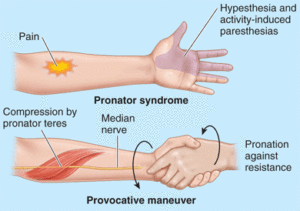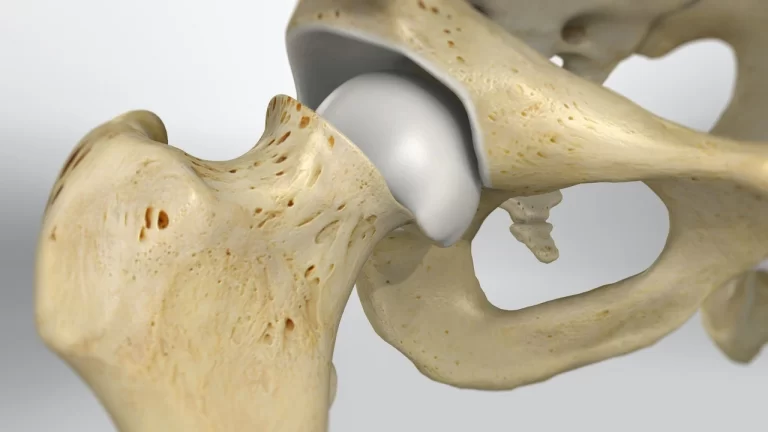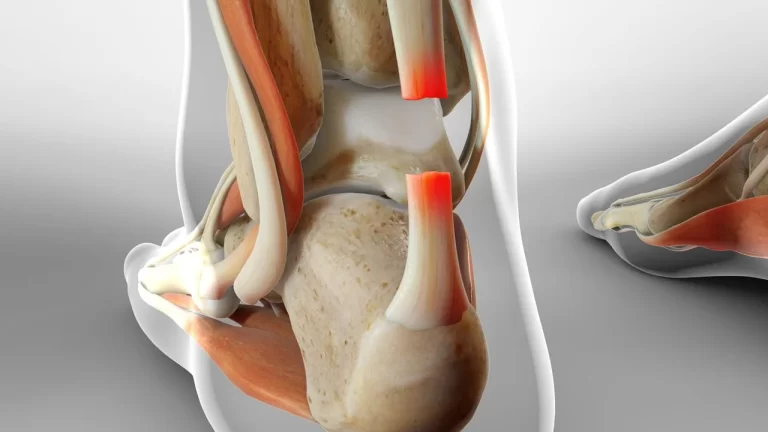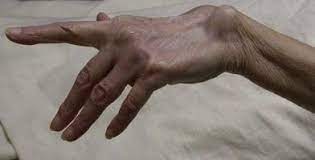Apraxia of Speech
Table of Contents
What Is Apraxia?
- Apraxia is a poorly acknowledged neurological condition. People who have it find it difficult or impossible to make some motor movements, even though their muscles are normal. Milde forms of apraxia are called dyspraxia.
- Apraxia can happen in a number of various forms. 1 form is orofacial apraxia. People with orofacial apraxia are unable to voluntarily perform certain movements including facial muscles. For instance, they may not be experts to lick their lips or wink. Another form of apraxia harms a person’s ability to intentionally move arms and legs.
- With apraxia of speech, a person finds it hard or impossible to move their mouth and tongue to speak. This occurs, even though the person has the desire to speak & the mouth & tongue muscles are physically able to form words.
- CAS is a motor speech disorder. This condition is present from birth, and it harms a child’s ability to form sounds and words. Children with speech apraxia sometime have far greater abilities to understand speech than to express themselves with spoken words.
- The majority of children with CAS will experience significant improvement, with the correct treatment.
What Is the various Between Apraxia of Speech and Aphasia?
- Apraxia is often confused with aphasia, another communication disorder. That confusion can be complicated by the fact that the 2 conditions can happen together.
- People with apraxia and aphasia might both have a hard expressing themselves with words. There are, though, distinct differences between the 2. Aphasia describes a problem in a person’s ability to understand or utilize words in and of themselves. This may create it difficult for someone with the condition to speak, read, or write. Yet apraxia does not describe trouble with language comprehension. Apraxia refers to the hard someone has initiating and performing the movements required to make a speech. This difficulty starts despite the fact that there is no weakness in the required muscles.
What Are the Symptoms of Apraxia of Speech?
There are a variety of speech-related symptoms that can be associated with apraxia, involving:
- Difficulty stringing syllables together in the appropriate order to create words, or inability to do so,
- Minimal babbling during infancy,
- Hard saying long or complex words,
- Repeated attempts at the pronunciation of words,
- Speech inconsistencies, such as being able to say a sound or word properly at certain times yet not others,
- Incorrect inflections or stresses on some sounds or words,
- Excessive utilization of nonverbal forms of communication,
- Distorting vowel sounds,
- Omitting consonants at the start and ends of words,
- Seeming to grope or struggle to create words.
Childhood apraxia of speech rarely happens alone. It is sometimes accompanied by other language or cognitive deficits, which may cause:
- Limited vocabulary,
- Grammatical problems,
- Problems with coordination & fine motor skills,
- Difficulties chewing & swallowing,
- Clumsiness.
What Causes Apraxia of Speech?
- Acquired apraxia results from brain damage to those parts of the brain that control the ability to speak. Conditions that may produce needed apraxia include head trauma, stroke, or a brain tumor.
- Experts do not acknowledge what causes childhood apraxia of speech. Certain scientists believe that it results from signaling problems between the brain and the muscles utilized for speaking.
- Ongoing research is focusing on whether brain abnormalities that cause apraxia of speech can be recognized. Another research is looking for the genetic cause of apraxia. Certain studies are trying to determine exactly which areas of the brain are linked to the condition.
Are There Tests to Diagnose Apraxia of Speech?
- There is not a single test or procedure that is utilized to diagnose childhood apraxia of speech. Diagnosis is complicated by the fact that speech-language pathologists have various opinions about which symptoms indicate the condition.
- Most experts, though, see the presence of multiple, common apraxia symptoms. They may assess a patient’s ability to constantly a word multiple times. Or they may assess whether a person can recite a list of words that are increasingly more difficult, like “play, playful, playfully.”
- A speech-language pathologist may interact with a child to assess which sounds, syllables, and words the child is able to create and understand. The pathologist will examine the child’s mouth, tongue, and face for any structural problems that might be causing apraxia symptoms.
- When diagnosing apraxia, experts may see the presence of other symptoms. For instance, they may look for weaknesses or difficulties with language comprehension. Both of these are indicative of other conditions and their presence would assist rule out apraxia. For people with possible acquired apraxia, an MRI of the brain may be utilized to determine the extent and location of any brain damage.
- Usually, a diagnosis of childhood apraxia of speech cannot be made before a child’s second birthday. Previous to this time, most children are unable to understand or perform the tasks needed to determine the presence of apraxia.
Are There Treatments for Apraxia of Speech?
- In certain cases of acquired apraxia, the condition resolves spontaneously. This is not the case with childhood apraxia of speech (CAS), which does not go away without treatment.
- There are various treatment approaches utilized for apraxia. How effective they are can differ from person to person. For the best results, apraxia treatment must be developed to meet a given individual’s requirements. Most children with apraxia of speech benefit from meeting one on one with a speech-language pathologist 3 to 5 times a week. They may also require to work with their parents or guardians to practice the skills they are developing.
Therapy for childhood apraxia of speech aims to increase speech coordination. Exercises may involve:
- Continuously practicing the formation and pronunciation of sounds and words,
- Practicing stringing together sounds to create speech,
- Working with rhythms or melodies,
- Using multisensory approaches, like watching in a mirror while trying to form words or touching the face while talking.
- Many therapists believe that sign language is beneficial for children who have a hard being understood. They sometimes recommend that children attempt to say the words they are signing to practice making the necessary movements with their mouths.
- People with more extreme cases of acquired apraxia may benefit from sign language. Or they may use assistive electronic devices, involving computers that can be used to produce words and sentences.
- Very few studies have been done to determine the relative effectiveness of different treatment approaches for childhood apraxia of speech. This may be due, in area, to the ongoing debate between experts as to which symptoms and characteristics merit a diagnosis of apraxia.
Physiotherapy management
- Remedial approach: In the remediation of the apraxias, it is advised that the therapist speak steadily and utilize the shortest possible sentences. One command should be given at a time, and the second command should not be given up to the 1st task is completed. When teaching the latest task, it should be broken down into smaller parts. One component is taught at a time, physically guiding the patient through the task if needed. It should be completed in precisely a similar manner each and every time. When all the individual units are mastered, an attempt to merge them should be created. A great deal of repetition may be needed. Family members must be advised to utilize the required approach found to be successful in the clinic. Performing activities in as normal an environment as possible assists. Butler provides a case example of a young woman relearning how to drink from a cup utilizing this technique. Utilizing the sensorimotor approach, multiple sensory inputs are used on the affected body areas to enhance the production of appropriate motor responses.
- Compensatory approach: Strategy training involves teaching the patient compensatory techniques to overcome the apraxia such as the utilization of pictures in the correct sequence to support ADL (activity of daily life) skills. his approach has been developed further and is now widely utilized to assist patients to overcome apraxia.
- Activities to increase coordination & balance can be incorporated.
- Strategy training for daily activities (ADLs) (i.e. teaching personal strategies to overcome the troubles of patient experiences).
- Gesture training (i.e. relearning gestures).
- Direct ADL (activity of daily life) training (i.e. relearning – or learning the newest ways to perform – daily tasks).
FAQs
Damage to the areas of the brain that control how your muscles move causes apraxia of speech. Any type of brain harm can cause apraxia. This involves stroke, traumatic brain injury, dementia, brain tumors, & brain diseases that get worse over time.
While there is no prevention, regular and intensive speech therapy using the principles of motor learning that is accessed quickly in the child’s life/diagnosis is known to best treat Childhood apraxia of speech (CAS). This means continuous attendance to therapy where the Speech-Language Pathologist (SLP) has experience in resulting Childhood apraxia of speech (CAS).
Other types of apraxia include limb-kinetic apraxia (the inability to create fine, precise movements with an arm or leg), and ideomotor apraxia (the inability to create the proper movement in response to a verbal command), and ideational apraxia (the inability to coordinate activities with the multiple, sequential movements).
The most usual causes of required apraxia are Brain tumors. A condition that causes gradual bad of the brain & nervous system (neurodegenerative illness) Dementia.
These symptoms are commonly noticed between ages 18 months and 2 (two) years and may indicate suspected Childhood apraxia of speech (CAS). As children produce more speech, commonly between ages 2 and 4, characteristics that likely indicate Childhood apraxia of speech (CAS) involves: Vowel and consonant distortions. Separation of syllables in/between words.
To evaluate your child’s condition, your child’s speech-language pathologist will review your child’s symptoms and medical history, lead an examination of the muscles used for speech, & examine how your child produces speech sounds, words, and phrases.
Children who have CAS do not outgrow the condition & there is no precaution. The early treatment alleviates the frustration that your child may look at if they want to say something yet are unable to communicate that message.
Apraxia is an outcome of neurological disease. It creates people unable to carry out everyday movements and gestures. For ex., a person with apraxia may be unable to tie their shoelaces or button up a shirt. People with apraxia of speech realize it challenging to talk & express themselves through speech.
1st, there obviously is no “guaranteed” result for a child with apraxia of speech. However, many, many children can learn to speak fairly well and be entirely verbal and intelligible if given early appropriate therapy and enough of it.
Speech therapy. Your child’s speech-language pathologist (SLP) will commonly provide therapy that aims at practicing syllables, words, & phrases. When Childhood apraxia of speech (CAS) is relatively severe, your child may require recurrent speech therapy, three (3) to five (5) times a week. As your child improves, the frequency of speech therapy may be reduced.






